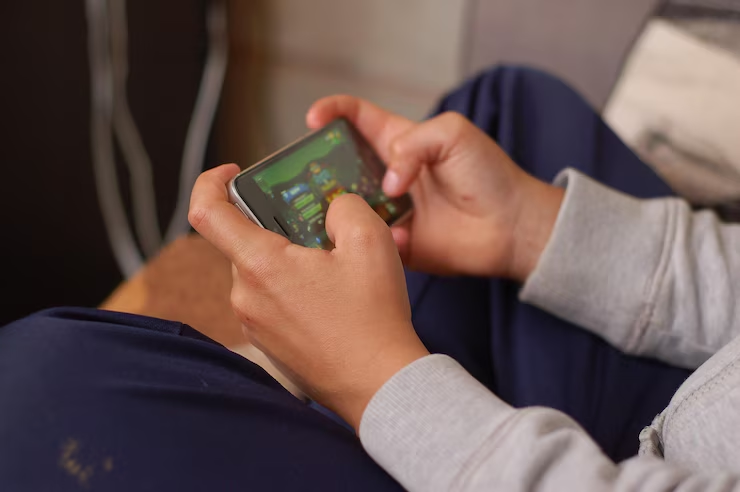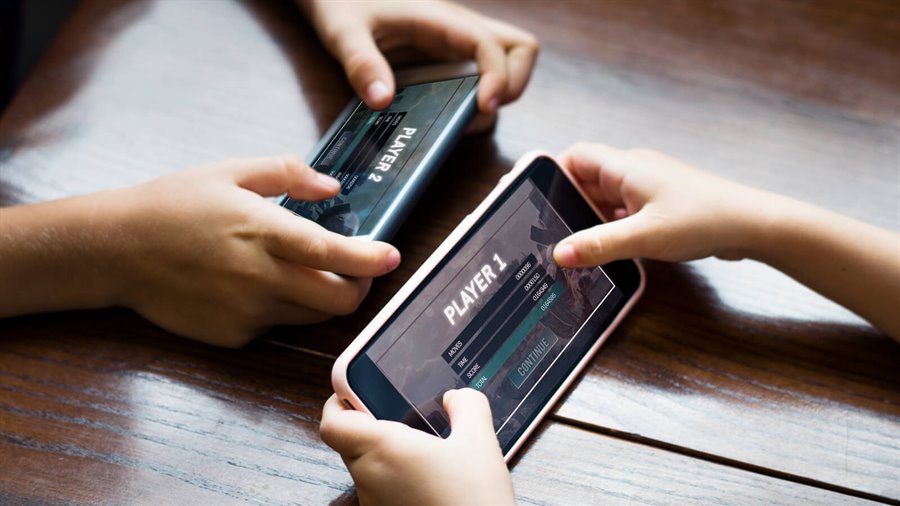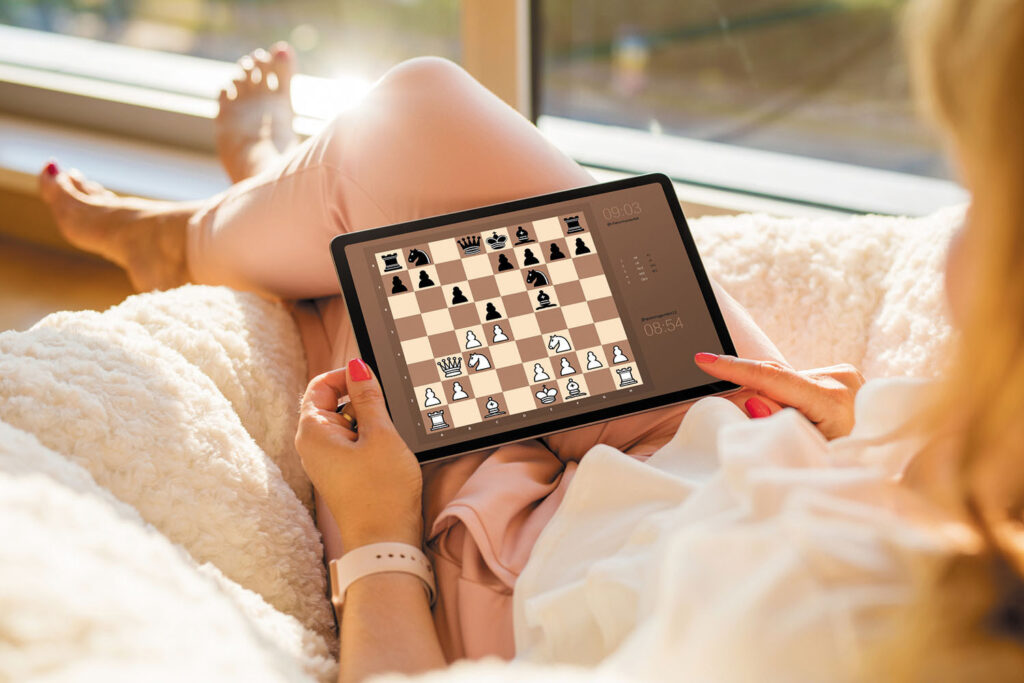
Picture this: it’s been a long day. Your inbox is overflowing, your to-do list is a mile long, and your shoulders are so tense they could double as a coat rack. You grab your phone, not to doomscroll through social media, but to open a simple tapping game. With each tap, you feel a tiny bit of that stress melt away, like ice cream on a summer day. Sound familiar? If not, you’re about to discover why tapping games—those addictive, easy-to-play mobile apps—are becoming a surprising ally in the battle against stress.
In this in-depth exploration, we’ll unpack how tapping games, from idle clickers to rhythm-based challenges, can help manage stress. We’ll weave together science, personal stories, expert insights, and actionable tips to show you why these games are more than just time-wasters. Whether you’re a gamer or someone just looking for a new way to unwind, this guide will leave you equipped to tap your way to a calmer mind.
What Are Tapping Games, and Why Do They Feel So Good?
Tapping games are exactly what they sound like: mobile or browser-based games where the primary action involves tapping the screen. Think of titles like Cookie Clicker, where you tap to bake virtual cookies, or Tap Tap Revenge, where you tap to the beat of a song. These games are simple, often requiring little strategy or commitment, making them accessible to everyone from kids to busy professionals.
But why do they feel so satisfying? It’s not just about mindlessly tapping. According to research from the University of California, engaging in repetitive, low-effort tasks can trigger a calming effect on the brain, similar to knitting or doodling. Tapping games tap into this by offering a rhythmic, predictable activity that soothes the nervous system. When I first tried AdVenture Capitalist, I was skeptical—how could clicking to “buy” virtual lemonade stands help me relax? But after a few minutes, I noticed my racing thoughts slowing down, replaced by a strange sense of focus.
These games also provide instant feedback. Each tap rewards you with points, sounds, or visual effects, creating a dopamine loop that feels inherently rewarding. This immediate gratification can be a welcome distraction from the chaos of daily life, giving your brain a mini-vacation.
The Science Behind Tapping Games and Stress Relief
Let’s get nerdy for a moment. Stress is more than just feeling overwhelmed—it’s a physiological response. When you’re stressed, your body releases cortisol, your heart rate spikes, and your brain goes into fight-or-flight mode. Tapping games, surprisingly, can help counter this.
A study published in the Journal of Cyberpsychology, Behavior, and Social Networking found that casual mobile games reduce cortisol levels by providing a mental break from stressors. Tapping games are particularly effective because they combine repetitive motion with cognitive engagement. The act of tapping engages the motor cortex, while the game’s visuals and sounds stimulate the brain’s reward centers. This dual action creates a state of “flow,” where you’re fully immersed in the moment, leaving little room for anxious thoughts.
I remember a particularly hectic week when I was juggling deadlines and family obligations. I downloaded Piano Tiles on a whim, thinking it’d be a fun distraction. The game required me to tap black tiles in time with music, and soon, I was so focused on hitting the right tiles that my worries faded into the background. Science backs this up: Dr. Jane McGonigal, a game designer and psychologist, explains that games can shift your brain from a stress response to a state of relaxed focus, lowering anxiety in as little as 10 minutes.
How Tapping Games Hack Your Brain
Here’s a breakdown of what’s happening in your brain when you play a tapping game:
- Dopamine Release: Each tap triggers a small reward, releasing dopamine, the “feel-good” neurotransmitter. This creates a sense of accomplishment, even for small tasks.
- Reduced Amygdala Activity: The amygdala, your brain’s stress center, calms down when you’re engaged in a low-stakes, repetitive task.
- Mindfulness Effect: Tapping games encourage you to focus on the present moment, mimicking mindfulness practices without the need for meditation.
- Distraction from Stressors: By occupying your attention, tapping games provide a mental escape, giving your brain a chance to reset.
This combination makes tapping games a powerful tool for stress management, especially for those who find traditional relaxation methods, like yoga or deep breathing, intimidating or inaccessible.
Tapping Games vs. Other Stress-Relief Methods: A Comparison
To put tapping games in context, let’s compare them to other popular stress-relief methods. Each approach has its strengths, but tapping games stand out for their accessibility and immediacy.
| Method | Pros | Cons | Best For |
|---|---|---|---|
| Tapping Games | Instant access, no learning curve, portable, fun, affordable (many are free) | Can be addictive if overused, not a long-term solution | Quick stress relief, busy schedules, casual gamers |
| Meditation | Deep relaxation, improves long-term mental health, scientifically proven | Requires practice, time commitment, not ideal for on-the-go | Those seeking mindfulness, with time to dedicate |
| Exercise | Boosts endorphins, improves physical health, reduces cortisol | Time-intensive, requires equipment or space, not always immediate | Active individuals, long-term stress management |
| Journaling | Helps process emotions, promotes self-reflection, low-cost | Can feel tedious, requires focus, not instant | Reflective types, those comfortable with writing |
| Therapy | Addresses root causes, personalized, long-term benefits | Expensive, time-consuming, not immediate | Chronic stress, those needing professional support |
Tapping games shine for their simplicity and speed. Unlike meditation, which might take weeks to master, or exercise, which requires physical effort, tapping games offer instant relief with zero barriers. They’re like the stress-relief equivalent of a quick coffee break—effective, but best used in moderation.
Who Can Benefit from Tapping Games?
Tapping games aren’t just for gamers. Their universal appeal makes them a stress-relief tool for a wide range of people:
- Busy Professionals: If you’re juggling meetings and deadlines, a quick 5-minute tapping session during a break can reset your focus. I’ve seen colleagues sneak in a round of Bubble Shooter between Zoom calls, emerging visibly calmer.
- Students: Exam stress is real. Tapping games provide a mental breather without the guilt of procrastination, as they’re short and engaging.
- Parents: With kids running around, finding time for self-care is tough. Tapping games are easy to pick up and put down, perfect for a stolen moment of peace.
- Seniors: Many tapping games, like Candy Crush, are intuitive and don’t require fast reflexes, making them ideal for older adults looking to stay mentally sharp and relaxed.
- Anyone with Anxiety: For those who struggle with racing thoughts, the repetitive nature of tapping can be grounding, offering a distraction from worry.
A friend of mine, a single mom, swears by Homescapes. She says the game’s gentle puzzles and satisfying “tap to renovate” mechanics help her unwind after a chaotic day. It’s not about escaping reality but giving her brain a moment to breathe.
The Psychology of Why Tapping Feels So Calming
Beyond the science, there’s a psychological layer to why tapping games work. They tap into our need for control and progress, especially when life feels chaotic. In a tapping game, every action has a predictable outcome—tap, and something happens. This contrasts with real-world stressors, where outcomes are often uncertain.
Psychologist Mihaly Csikszentmihalyi, known for his work on flow states, argues that activities with clear goals and immediate feedback, like tapping games, create a sense of mastery. When you’re stressed, feeling in control of even a virtual world can be empowering. I felt this firsthand playing Clicker Heroes. The game’s endless progression—tapping to defeat monsters and earn gold—gave me a sense of achievement, even when my real-life to-do list felt insurmountable.
Tapping games also offer a safe space to fail. Unlike work or relationships, where mistakes have consequences, a missed tap in a game is no big deal. This low-stakes environment reduces pressure, allowing you to relax without fear of judgment.
Potential Downsides and How to Avoid Them
Like any good thing, tapping games have their pitfalls. Overuse can lead to addiction, where you’re tapping away hours instead of addressing stress’s root causes. A report from the American Psychological Association warns that excessive gaming can increase anxiety if it becomes a crutch.
To use tapping games effectively:
- Set Time Limits: Aim for 10–15 minutes per session. Use your phone’s timer or a gaming app with built-in reminders.
- Balance with Other Methods: Pair tapping games with exercise or journaling for a holistic approach. For example, I play Tap Titans for a quick break, then follow up with a 5-minute walk.
- Choose Non-Intrusive Games: Avoid games with aggressive ads or in-app purchases that can add stress. Look for ad-free versions or paid apps like Monument Valley.
- Reflect on Usage: If you’re playing to avoid problems, it’s time to reassess. Games should complement, not replace, problem-solving.
I learned this the hard way when I got hooked on Idle Miner Tycoon. What started as a stress-reliever became a time-sink, so I set a 15-minute daily limit and found a better balance.
Actionable Tips to Maximize Stress Relief with Tapping Games
Ready to try tapping games for stress management? Here’s how to get started:
- Pick the Right Game for You:
- For rhythm lovers: Try Beat Saber (mobile version) or Piano Tiles.
- For idle fans: Check out Cookie Clicker or AdVenture Capitalist.
- For puzzle enthusiasts: Candy Crush or Homescapes offer gentle challenges.
- Pro tip: Browse Google Play or the App Store’s “Casual Games” section for free options.
- Create a Stress-Relief Ritual:
- Pair your gaming with a calming setting—dim lights, a cozy chair, or soft music.
- Play during natural breaks, like after lunch or before bed, to signal relaxation.
- Combine with Breathing Exercises:
- Before starting, take 5 deep breaths to center yourself. This amplifies the game’s calming effect.
- I do this with Bubble Pop, exhaling slowly with each tap—it’s surprisingly meditative.
- Track Your Mood:
- Use a journal or app like Daylio to note how you feel before and after playing. This helps you gauge the games’ impact.
- Engage Socially (Optional):
- Some games, like Words With Friends, let you connect with others, adding a social element to stress relief. Invite a friend for a friendly competition.
Real-Life Stories: How Tapping Games Changed the Game for Stress
To bring this home, let’s hear from real people who’ve used tapping games to manage stress:
- Sarah, 34, Graphic Designer: “I used to stress-eat during deadlines. Then I found Tetris. Tapping to arrange blocks helps me focus, and I’ve cut down on snacking. It’s like my brain gets a reset.”
- Michael, 19, College Student: “Exams had me spiraling. My friend suggested Tap Tap Fish. Watching my virtual aquarium grow while tapping is weirdly calming. It’s my go-to before bed.”
- Linda, 62, Retired Nurse: “I thought gaming was for kids, but my granddaughter showed me Candy Crush. It’s fun, and I feel sharper and less anxious after playing.”
These stories highlight the universal appeal of tapping games. They’re not a cure-all, but they’re a versatile tool for moments when stress feels overwhelming.
FAQ: Your Burning Questions About Tapping Games and Stress
Q: Can tapping games really reduce stress, or is it just a placebo?
A: They genuinely reduce stress by lowering cortisol and engaging your brain in a flow state, as shown in studies like those from Frontiers in Psychology. The effect varies by person, but the science is solid.
Q: Are tapping games safe for kids to use for stress relief?
A: Yes, in moderation. Choose age-appropriate games and set time limits to prevent overuse. Games like Toca Kitchen are great for younger kids.
Q: How do I know if I’m playing too much?
A: If gaming interferes with work, sleep, or relationships, it’s a red flag. Stick to short sessions and reflect on whether you’re using games to escape rather than relax.
Q: Can tapping games help with anxiety disorders?
A: They can provide temporary relief by distracting from anxious thoughts, but they’re not a substitute for therapy or medication. Consult a professional for clinical anxiety.
Q: Are there tapping games designed specifically for relaxation?
A: Yes! Games like Zen Koi or My Oasis focus on calming visuals and gentle tapping mechanics, designed to promote relaxation.
Conclusion: Tapping Your Way to a Calmer You
Tapping games might seem like a small, even frivolous, part of modern life, but their impact on stress management is anything but trivial. By blending simplicity, instant rewards, and a touch of fun, these games offer a unique way to hit pause on life’s chaos. From the science of dopamine to the psychology of flow, tapping games tap into our brains’ natural wiring, providing a quick, accessible path to relief.
But they’re not a magic bullet. Like any tool, their power lies in how you use them. Pair them with other stress-relief strategies, set boundaries to avoid overuse, and choose games that spark joy. Whether you’re a busy parent, a stressed-out student, or just someone navigating the grind, tapping games can be a pocket-sized ally in your quest for calm.
So, next time stress creeps in, grab your phone, pick a game, and start tapping. You might be surprised at how a few minutes of playful clicks can shift your mood. And who knows? You might just find yourself smiling as you bake virtual cookies or pop colorful bubbles, one satisfying tap at a time.















